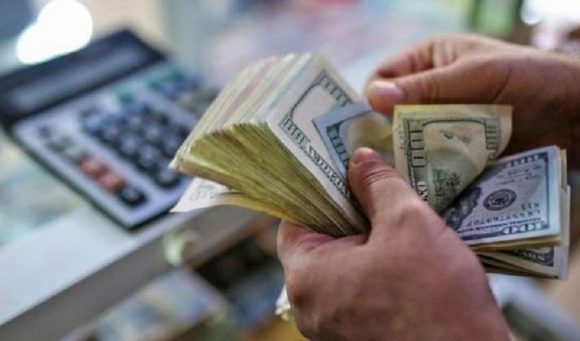By Yilena Héctor Rodríguez
In a complex economic scenario, marked by a lack of liquidity, rising inflation, and the effects of the U.S. government’s economic war, Cuban authorities are increasingly facing financial crimes that affect the control of the country’s money supply, both in Cuban pesos and foreign currency.
The most visible manifestation is the illegal currency trafficking in various and new forms, carried out by networks that directly affect the country’s monetary, fiscal, and price policies.
The phenomenon, while not new, has become more complex as it has become intertwined with transnational structures that combine operators abroad with collection and distribution networks within Cuba, explained Lieutenant Colonel Yisnel Rivero Crespo, head of the Economic Crimes Department of the Ministry of the Interior’s Investigative Unit.
In statements to the press, Rivero Crespo noted that remittances have historically been a vital source of foreign currency for the region and for Cuba.
However, in the current scenario, “the country receives less than 10% of what it used to,” due to the U.S. government’s policy of financial persecution and new criminal methods that keep money outside the country, thus complementing the former.
People in Cuba receive the equivalent of what their relatives send them in Cuban pesos, but the dollars don’t reach the financial system: they remain abroad to pay for imports or fuel illicit schemes like the one fostered by a new figure called a “financier,” said Rivero Crespo.
Case number 121/2025
It is in this context that case file 121/2025, currently in the preliminary phase, reveals a structure directed from the United States by Cuban citizen Humberto Julio Mora Caballero.
According to the information provided, Mora Caballero obtained foreign currency in the United States and, through a network of front men, opened more than 30 bank accounts to move the money and pay suppliers.
Simultaneously, he established an operational base in Camagüey, Cuba, where a group of subordinates collected large sums of Cuban pesos in cash weekly from non-state-run businesses.
This money was transported from Havana and other provinces to Camagüey, and then distributed as remittances to Cuban families.
The scheme included payments from the United States to suppliers through the aforementioned front men—violating U.S. banking regulations—and, within Cuba, the use of Cuban pesos obtained from the collections of these non-state actors.
This money, which should have entered the banking system as part of the transactions in the tax accounts, remained in circulation to sustain the criminal operations.
From February to September 2025, the network operated by Mora Caballero moved more than one billion Cuban pesos and around a quarter of a million US dollars.
“This is not the first time we have confronted this individual’s organization, which was initially dismantled in July and subsequently in October of this year,” stated Rivero Crespo, adding that more than a dozen individuals involved are under precautionary measures while the investigation continues.
Four non-state actors linked to this network are being investigated, although they are not the only ones with whom Mora Caballero maintained financial relationships.
Impact on the Economy
The consequences of these types of operations are felt nationwide. Because foreign currency is not deposited into the banking system, the State loses real capacity to pay for essential imports.
Meanwhile, the trafficking of large sums of cash in national currency undermines the availability of cash in banks and ATMs.
These and other phenomena put upward pressure on the illegal exchange rate, which becomes the benchmark for price formation, with the consequent increase in the cost of living.
According to the Ministry of the Interior (Minint), the informal rate reflects not only elements of the real economy, but also processes of subversion and manipulation associated with foreign interests.
These types of networks thrive in a context where U.S. financial persecution severely limits the country’s international transactions.
“The United States loses nothing from this; on the contrary, it benefits them. Cuban money remains circulating within Cuba while the foreign currency stays there,” Rivero Crespo pointed out.
He commented that when these operations have been reported to U.S. authorities, the response has been nonexistent.
The policy toward Cuba, he added, fosters these kinds of distortions as part of an economic warfare strategy aimed at minimizing the inflow of foreign currency to the Cuban state.
Authorities warn that other structures operate similarly to the one described in this case, including social media scams where unscrupulous individuals pose as financiers.
In all cases, common patterns emerge: the use of front men in Cuba and the United States, large volumes of cash in Cuban pesos, systematic collection of funds from non-state actors, irregular payments to foreign suppliers, and the maintenance of illicit remittances that never enter the national banking system.
Faced with this situation, the country is preparing new institutional measures that combine financial controls, strengthened regulations, increased tax oversight, and targeted operations focused primarily on the most powerful financial structures.
“This isn’t about cracking down on micro, small, and medium-sized enterprises (MSMEs), which are essential to the country, but about cutting off the illegal flows that are harming the national economy,” emphasized the head of the Economic Crimes Department of the Ministry of the Interior’s Investigative Body.
The investigation remains open and will unfold as other operators and international connections are identified.
The challenge for the authorities is to confront this phenomenon without relinquishing sovereignty or the principles that underpin the Cuban socioeconomic model.
IMAGE CREDIT: Illegal currency trafficking threatens the national economy. Photo: Radio Rebelde (Archive)
[ SOURCE: CUBA DEBATE ]

